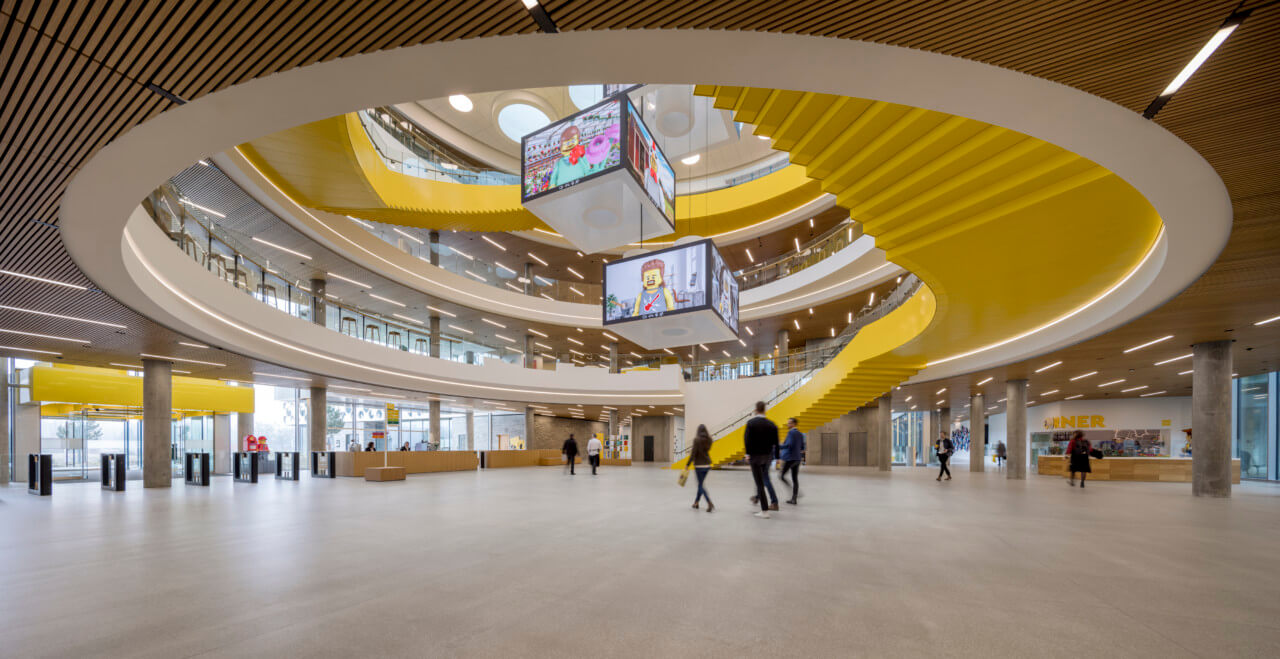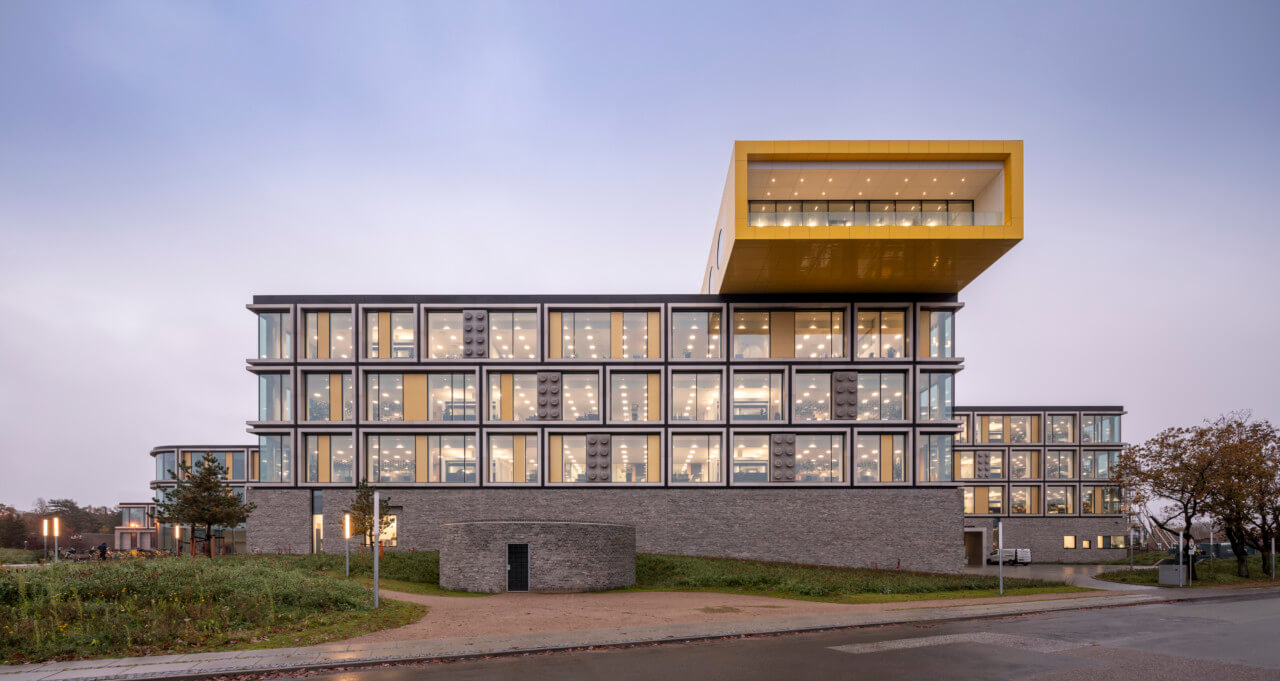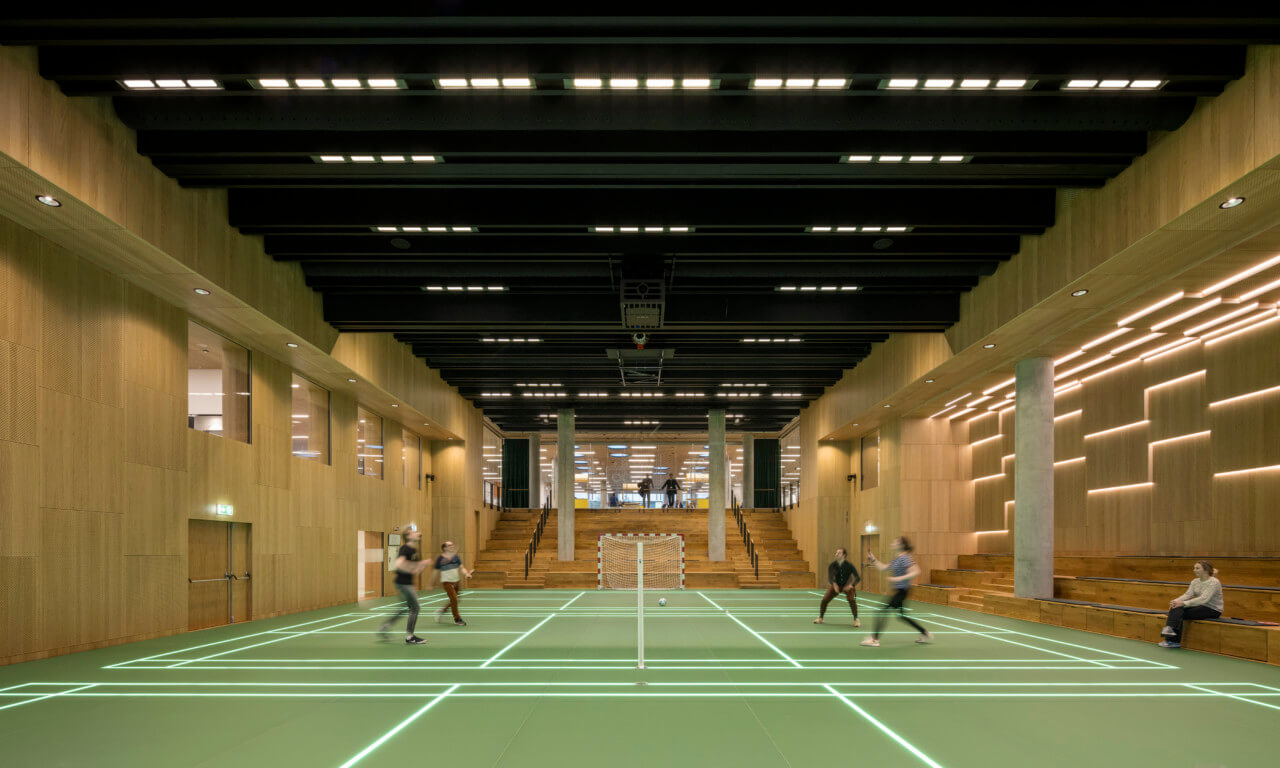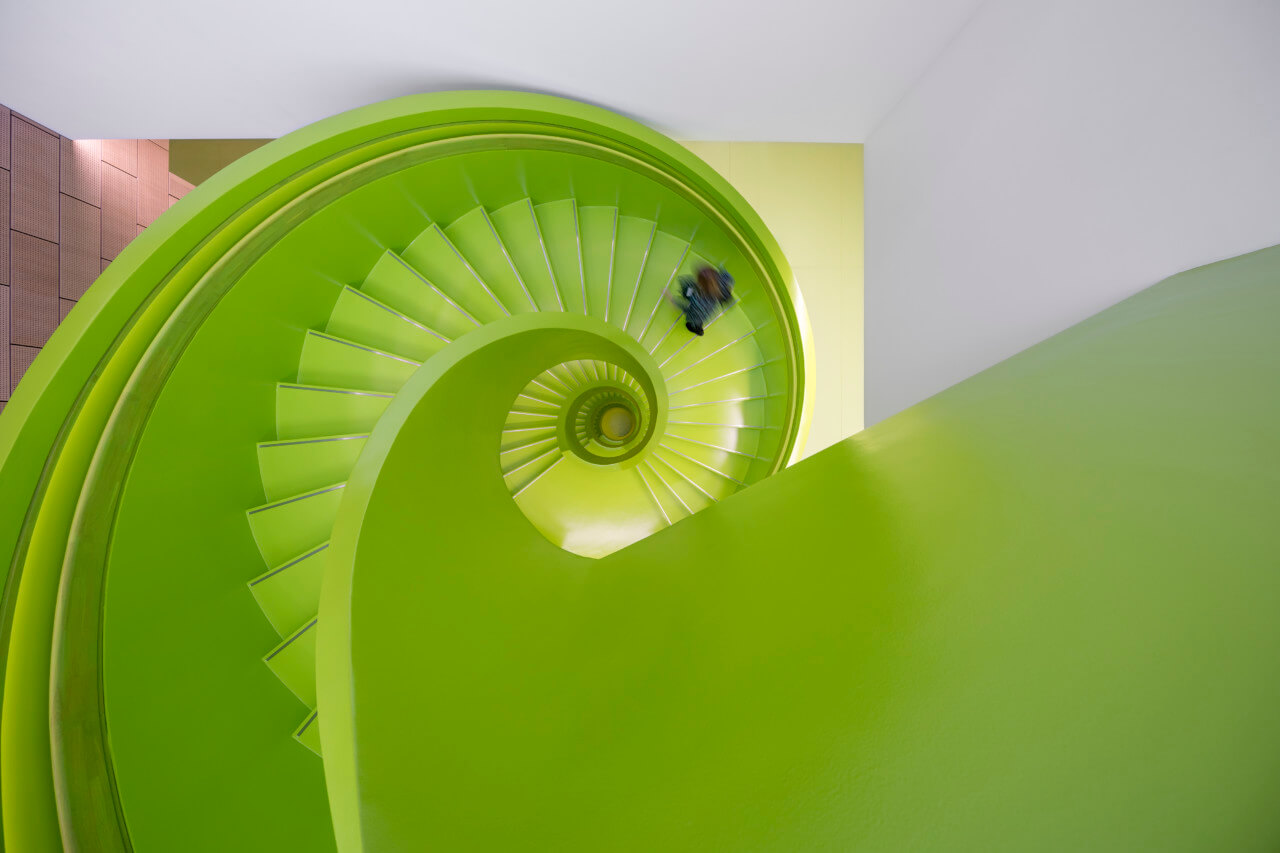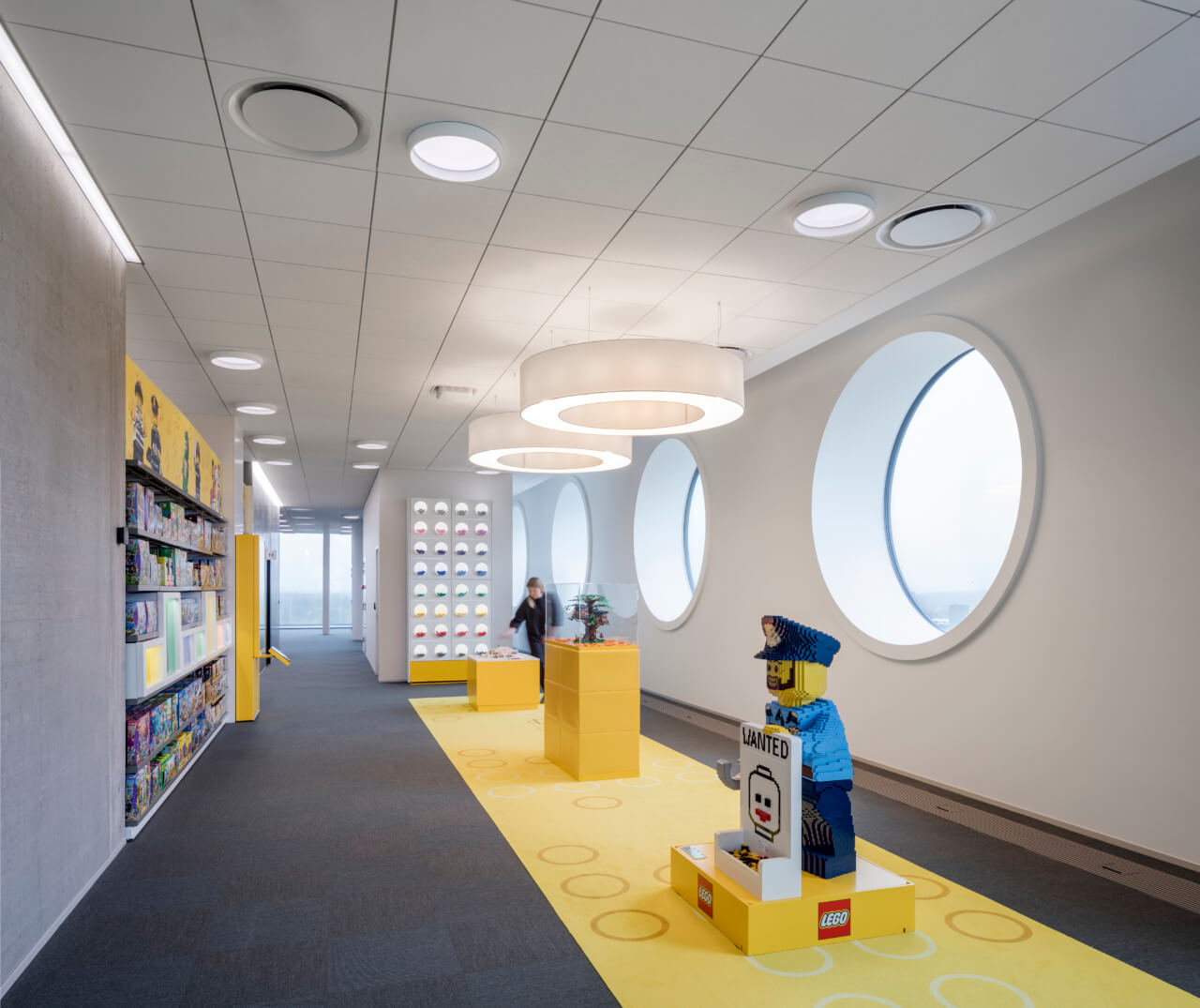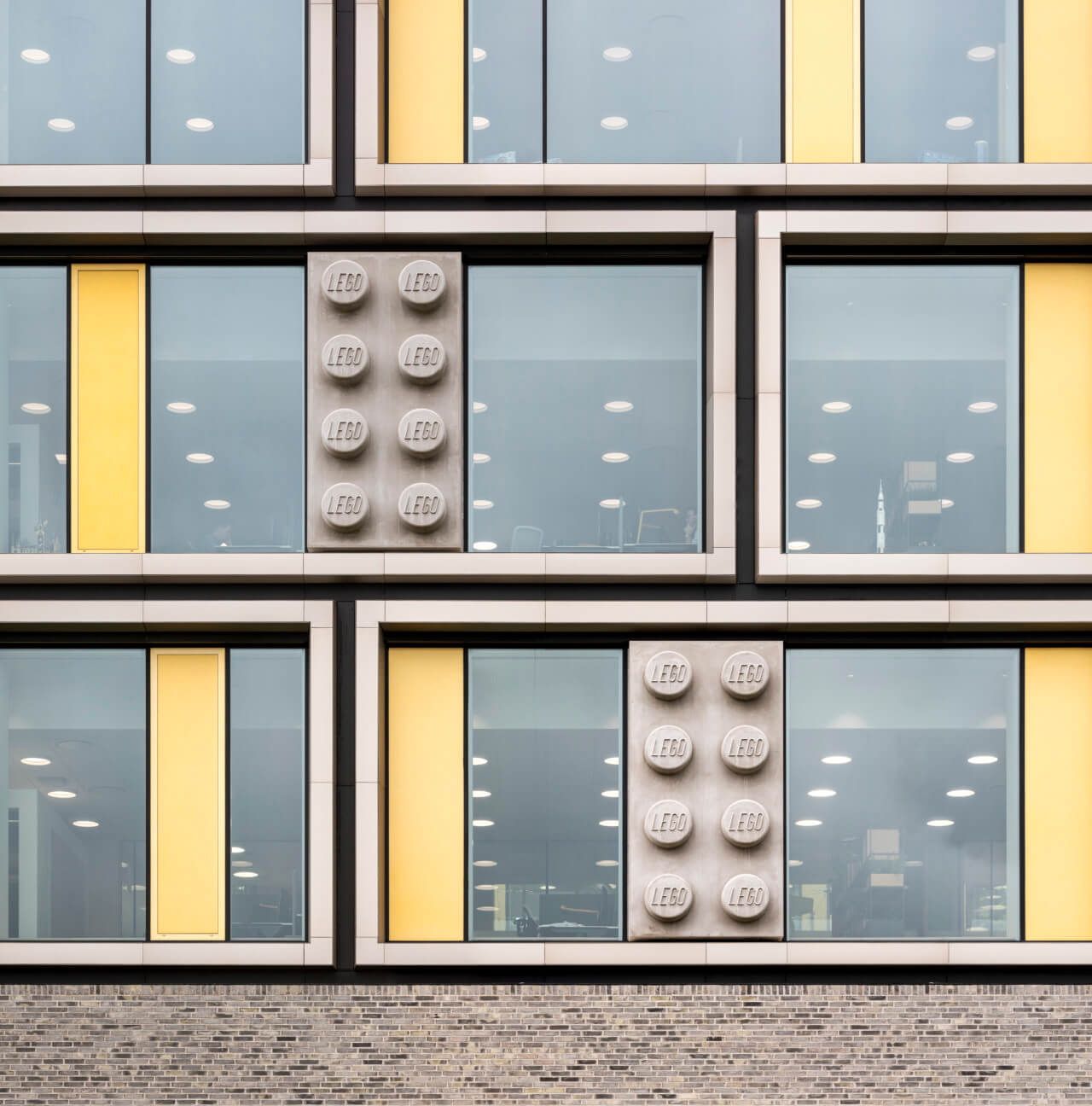Famed Danish toymaker LEGO appears to be confident that the future of interlocking plastic building bricks is an exceeding awesome one. Just weeks after announcing a massive headquarters expansion that’s slated to kick off next year, LEGO Group has officially completed its years-in-the-making, multi-phase LEGO Campus project in its hometown of Billund.
Led by C.F. Møller Architects, one of Denmark’s largest and most venerable architecture firms, in the role of both design architect and landscape architect, the roughly 560,000-square-foot office complex is comprised of eight interconnected (naturally) “building parts” that have been “merged to create a continuous work and place space” for 2,000 LEGO Group employees–or “colleagues” as the company refers to them. As noted by C.F. Møller in a press release, the individual building parts “echo the scale of the surrounding LEGO facilities as well as the city of Billund, and the ensemble deliberately avoids uniformity in favor of diversity and playful twists, to reflect the multitude of options that LEGO play represents.”
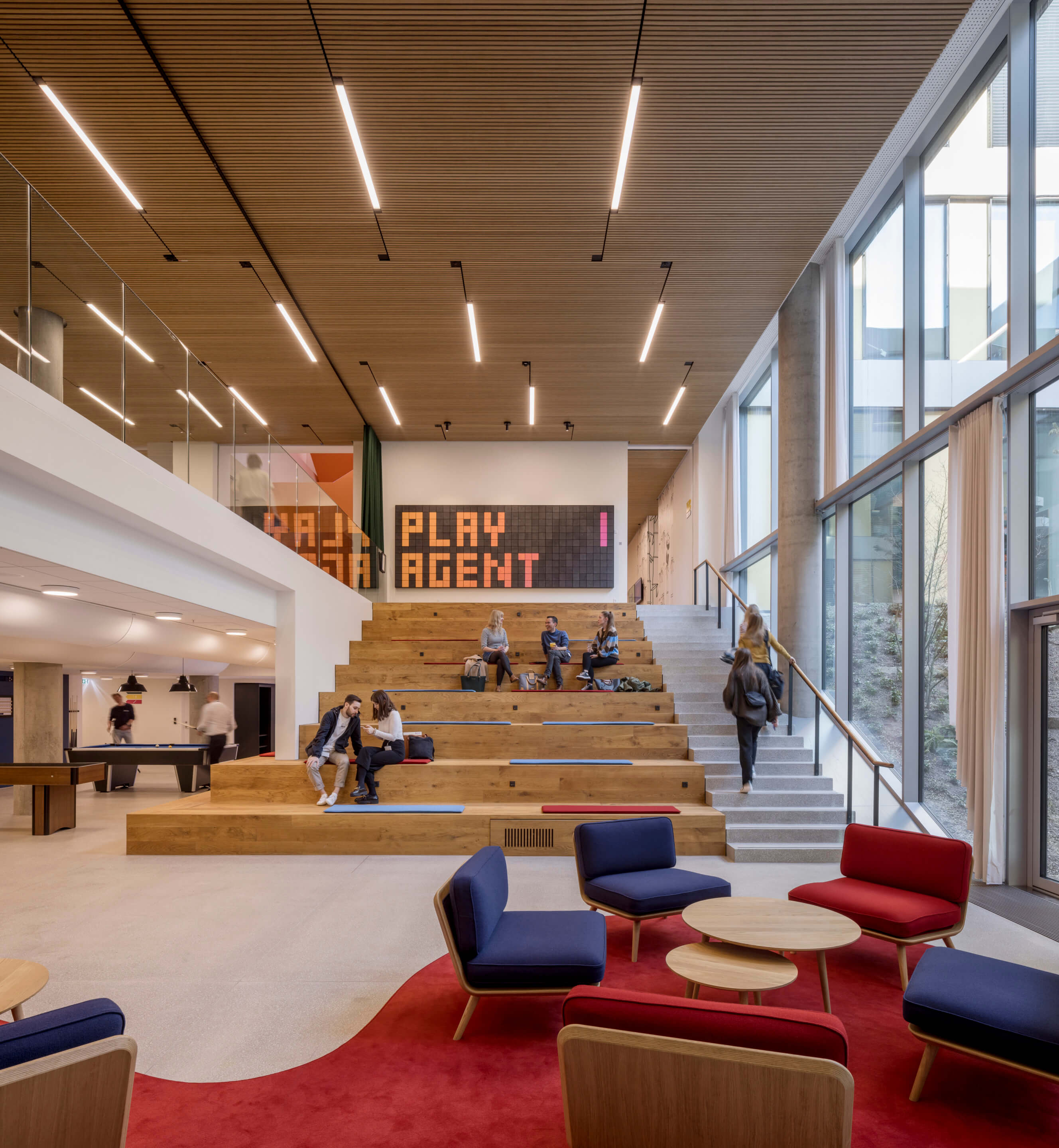
The first two “parts” that form LEGO Group’s new corporate campus first debuted in 2019 as a portion of the project’s first phase; this included a squat office block topped off with a Paul Bunyan–sized cantilevered yellow brick that houses meeting space. In total, two of these colossal, LEGO brick-esque volumes are now perched atop the compound’s sedum-covered rooftops along with a mini-golf course and a greenhouse. The greenery that blankets the building rooftops extends throughout the entire campus, which doubles as a sprawling public park for Billund complete with walking trails, lush gardens, and outdoor furnishings made from recycled LEGO waste.
Although there’s a lot going on throughout the kaleidoscopic headquarters, a central focal point is the Campus Square. The name is a touch misleading as this anchoring space is circular and centered around a sky-lit, four-story atrium complete with a meandering yellow staircase wrapping around the soaring space.
In addition to the highly photogenic Campus Square, another major element—one touted heavily by LEGO Group—is a culture and activity hub known as the People House. Developed in partnership with LEGO Group colleagues, the People House is envisioned as a place for “relaxation, inspiration and recharging,” and is meant to, as the company explained, “enable a more flexible environment to work and play and is reflective of the hybrid working style that is in place across the LEGO Group.”

To that end, among the People House’s many amenities include fitness facilities, lodgings for visiting employees, a movie theater, communal kitchen, health clinic, and more. Given that the People House essentially functions as a home away from home, families of LEGO colleagues have access to the People House, which is spread throughout the ground-floors of the interconnected individual buildings. As noted by C.F. Møller, the connective tissue between the different buildings, most of them rising just three or four stories, is realized as a series of “small squares with brightly coloured stairways [that] form social nodes and wayfinding markers.”
Outside of the Lego Campus and its People House, home for many LEGO employees is Billund, a rather compact burg in Denmark’s scenic Jutland countryside. With a population of just north of 6,000 people within the town proper, Billund is one of one Scandinavia’s better-known (and most-visited) company towns and is similar in size and character to IKEA’s ancestral birthplace-slash-design hub of Älmhult, Sweden, but with a massive theme park and international airport on its immediate outskirts.
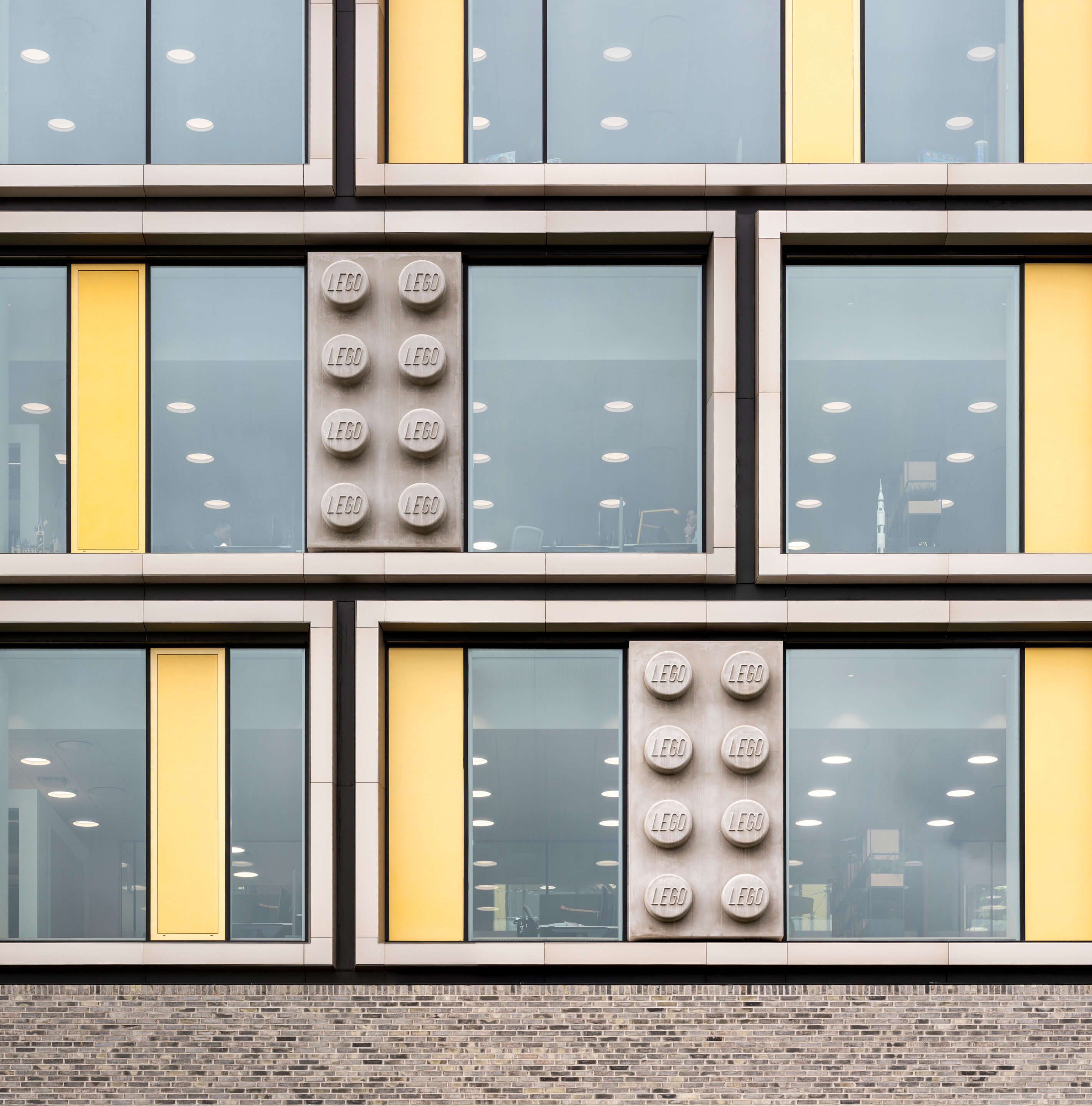
As mentioned, LEGO Group’s footprint within Billund is set to grow even further with the 90-year-old company’s expansion plans that were first unveiled in February. Per the company, investments are set to include the new so-called Kornmarken Campus that will link the existing LEGO factory with a new roughly half-million-square-foot building. An estimated 1,900 employees will work from this newly established campus on the fringes of Billund that brings together both factory-based colleagues and colleagues from the Engineering & Quality and Engineering & Workplace departments, who are currently scattered at different locations across town. In the heart of Billund, there are also plans to construct a new office building that will function as an Innovation Campus for LEGO Group, providing “a dedicated space for product innovation and product technology development,” per the company.
Construction work on both the Kornmarken Campus and the downtown Innovation Campus are slated to kick off next year; both are set to open in 2025.
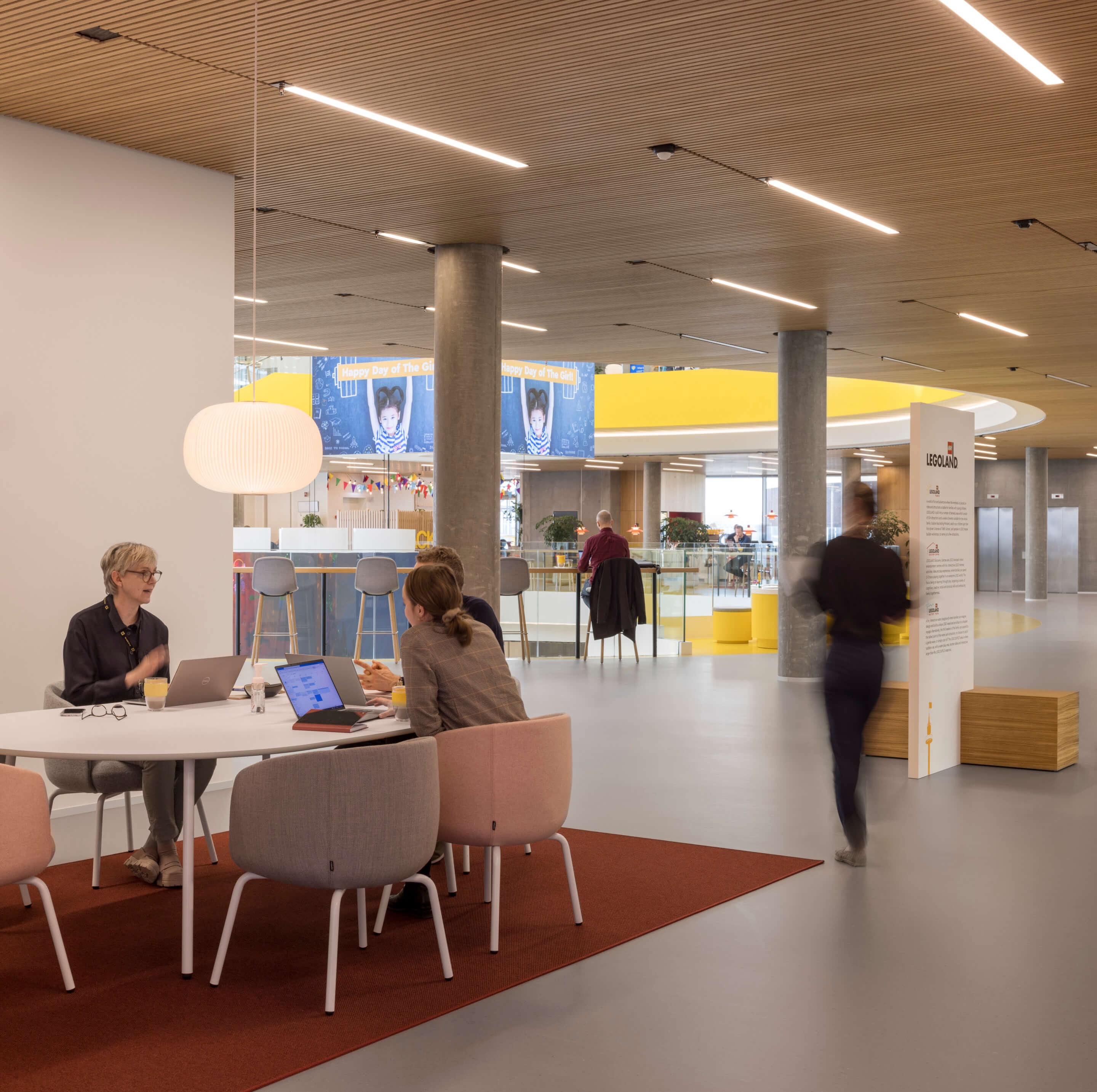
Back at C.F. Møller’s just-opened main LEGO Campus (which isn’t too far from BIG’s LEGO House experience center), sustainability played an integral role in its design. In addition to the green roofs and vast expanses of open space meant to foster biodiversity, sustainable features of the LEED Gold campus include advanced rainwater harvesting, an intensive waste diversion scheme, passive daylighting systems, and the use of recycled/recyclable materials throughout. The building is also partly powered by solar panels located on the rooftop of a nearby parking structure.
Joining C.F. Møller on the project was engineer Niras and contractor K.G. Hansen & Sønner.






